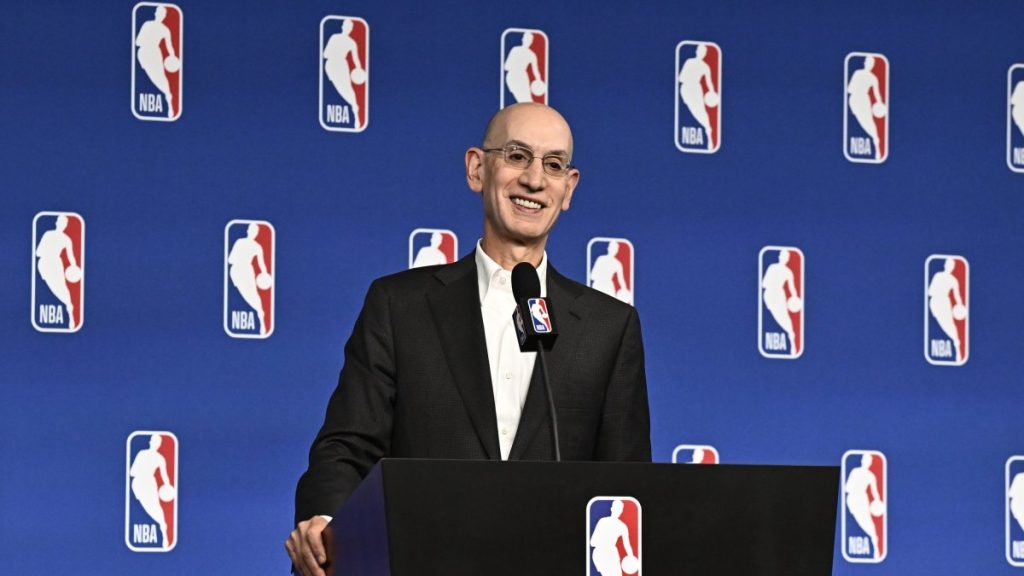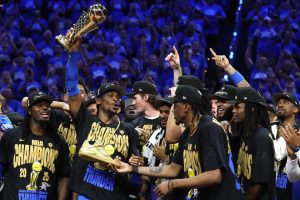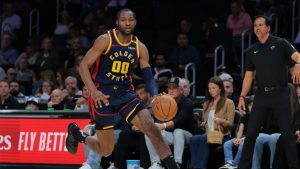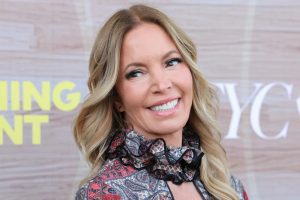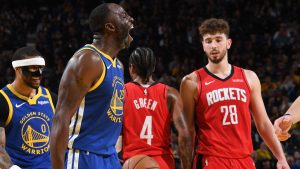Explaining the second apron, a key financial rule in the NBA’s CBA originally appeared on NBC Sports Philadelphia
In under 24 hours, the Boston Celtics had to trade two players key to their 2024 NBA title.
Guard Jrue Holiday was dealt to the Portland Trail Blazers for Anfernee Simons and a pair of second-round picks, while center Kristaps Porzingis moved to the Atlanta Hawks in a three-team deal that saw Georges Niang and a draft pick return.
Why would the Celtics make such a move, let alone two? Is it because they’re trying to get younger? Do they want to refresh the core around Jayson Tatum as he rehabs from a torn Achilles?
There may be some truth to multiple reasons, but there’s also one key aspect to note: the second apron. Here’s everything to know about the financial rule that is in the NBA’s collective bargaining agreement:
What is the second apron in the NBA?
The second apron in the NBA is a spending threshold that triggers additional layers of penalties for exceeding certain limits.
The NBA operates with a soft cap, meaning teams can still spend over the limit — usually by paying the luxury tax — to keep their roster intact without too much enforcement. It’s different than the NFL’s hard cap, which is stricter and has penalties that can be enforced sooner.
How does the second apron in the NBA work?
The second apron is the final spending limit franchises can go into before facing severe team-building penalties. First there is the luxury tax, which helped the Golden State Warriors build their recent dynasty.
Then there is the first apron, which has its own sets of penalties for teams. The second apron goes even further, so teams with significant payrolls are likely to break up the roster after a few years, which can affect long-term planning.
When did the second apron start in the NBA?
The second apron took into effect in the 2024 offseason after the new collective bargaining agreement was ratified in 2023.
What is the second apron amount in the NBA?
Entering the 2025-26 season, the salary cap is projected to be $154.6 million and the luxury tax is projected to be $187.9 million, according to ESPN. The first apron is set for $195.9 million and the second apron $207.8 million — higher by $17.8 million from 2024-25.
What are the second apron penalties in the NBA?
These are the key penalties for teams in the first apron and second apron:
First apron:
- Sign-and-trades are not permitted if the player acquired keeps the team above the apron.
- Cannot sign players who were waived during the regular season if their salary was above the $12.2 million mid-level exception.
- Salary matching in trades has to be within 110% instead of the 125% teams in good standing get.
Second apron:
- Includes all first-apron penalties
- Cannot have access to the MLE in free agency or absorbing contracts.
- Cannot trade first-round picks from seven years out.
- Cannot use trade exceptions from previous years.
- Cannot use cash in trades.
- First round pick moves straight to the end of the first round if the team stays in the second apron for three of five years.
Which NBA teams are in the second apron?
The Celtics will be out of the second apron once their Holiday and Porzingis trades are official. Heading into 2025-26, the Cleveland Cavaliers and Phoenix Suns are currently in the second apron, per Spotrac, while the Houston Rockets, New York Knicks and Denver Nuggets are approaching the amount.
Explaining the second apron, a key financial rule in the NBA’s CBA
The second apron has made it difficult for NBA teams to retain all their stars. Here’s what to know.
By Sanjesh Singh •
Published 40 mins ago •
Updated 40 mins ago
In under 24 hours, the Boston Celtics had to trade two players key to their 2024 NBA title.
Guard Jrue Holiday was dealt to the Portland Trail Blazers for Anfernee Simons and a pair of second-round picks, while center Kristaps Porzingis moved to the Atlanta Hawks in a three-team deal that saw Georges Niang and a draft pick return.
Why would the Celtics make such a move, let alone two? Is it because they’re trying to get younger? Do they want to refresh the core around Jayson Tatum as he rehabs from a torn Achilles?
There may be some truth to multiple reasons, but there’s also one key aspect to note: the second apron. Here’s everything to know about the financial rule that is in the NBA’s collective bargaining agreement:
What is the second apron in the NBA?
The second apron in the NBA is a spending threshold that triggers additional layers of penalties for exceeding certain limits.
NBA
The NBA operates with a soft cap, meaning teams can still spend over the limit — usually by paying the luxury tax — to keep their roster intact without too much enforcement. It’s different than the NFL’s hard cap, which is stricter and has penalties that can be enforced sooner.
How does the second apron in the NBA work?
The second apron is the final spending limit franchises can go into before facing severe team-building penalties. First there is the luxury tax, which helped the Golden State Warriors build their recent dynasty.
Then there is the first apron, which has its own sets of penalties for teams. The second apron goes even further, so teams with significant payrolls are likely to break up the roster after a few years, which can affect long-term planning.
When did the second apron start in the NBA?
The second apron took into effect in the 2024 offseason after the new collective bargaining agreement was ratified in 2023.
What is the second apron amount in the NBA?
Entering the 2025-26 season, the salary cap is projected to be $154.6 million and the luxury tax is projected to be $187.9 million, according to ESPN. The first apron is set for $195.9 million and the second apron $207.8 million — higher by $17.8 million from 2024-25.
What are the second apron penalties in the NBA?
These are the key penalties for teams in the first apron and second apron:
First apron:
- Sign-and-trades are not permitted if the player acquired keeps the team above the apron.
- Cannot sign players who were waived during the regular season if their salary was above the $12.2 million mid-level exception.
- Salary matching in trades has to be within 110% instead of the 125% teams in good standing get.
Second apron:
- Includes all first-apron penalties
- Cannot have access to the MLE in free agency or absorbing contracts.
- Cannot trade first-round picks from seven years out.
- Cannot use trade exceptions from previous years.
- Cannot use cash in trades.
- First round pick moves straight to the end of the first round if the team stays in the second apron for three of five years.
Which NBA teams are in the second apron?
The Celtics will be out of the second apron once their Holiday and Porzingis trades are official. Heading into 2025-26, the Cleveland Cavaliers and Phoenix Suns are currently in the second apron, per Spotrac, while the Houston Rockets, New York Knicks and Denver Nuggets are approaching the amount.
This article tagged under:

